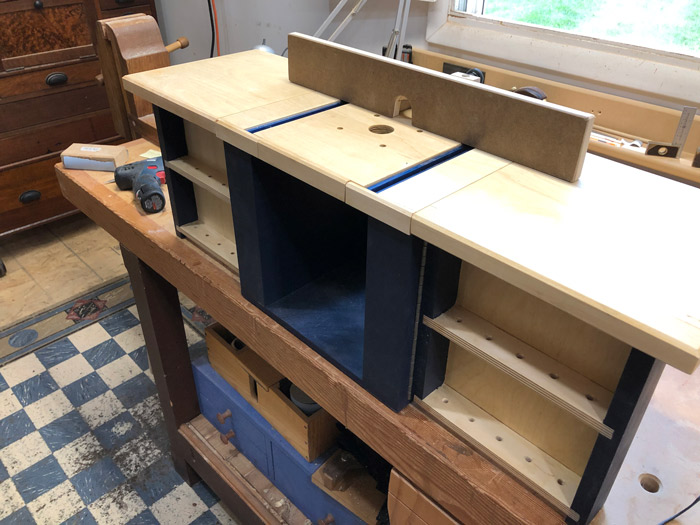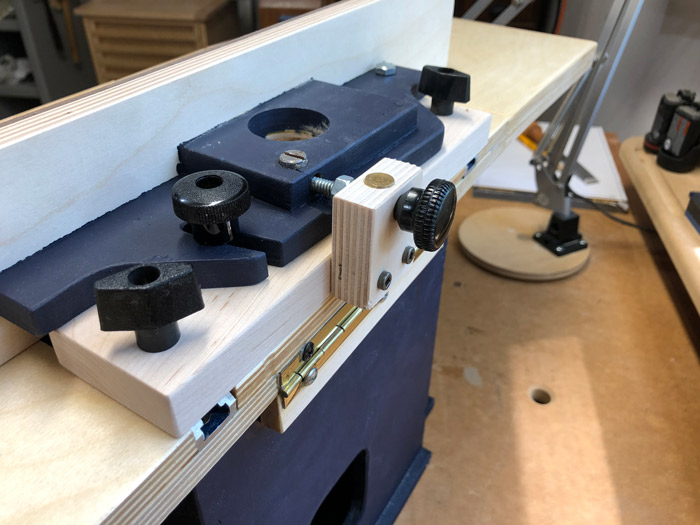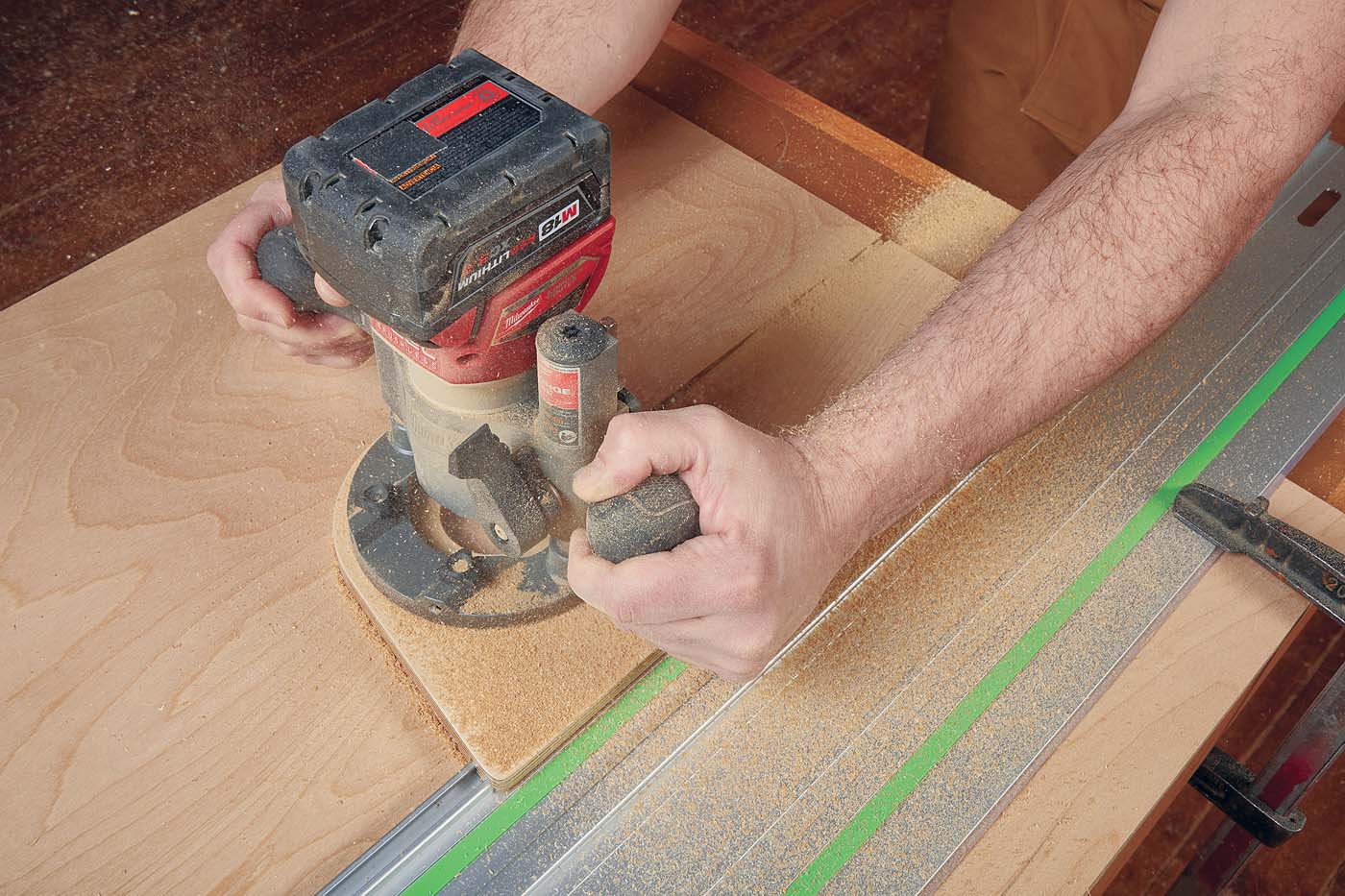Ever since I got the Bosch Colt router, I've been thinking of building a table to go with it. This plan has proven itself in the shop for several years. So I decided to make one for myself.

Since I can't leave well enough alone, a modification was called for. The size of the table makes it ideal for fine work on small projects — like these puzzle boxes. However, the fence on the table (as good as it is), doesn't have a fine-adjustment feature.

I've long admired the work of Pat Warner, a woodworker who loved tinkering with the capabilities of the router. The fence I made is inspired by his work.

The base of the fence is the same overall size as the original. The only change is to the taper the front edge.
On top, the pivoting fence face swings on a bolt on the outfeed end and is controlled by a knob on the near end. Another knob locks it in place.
All in all, I have just over 1" of fine adjustment room, which is plenty for the kinds of adjustments that I'll need to make.
The fence's face is a smooth, continuous surface of hardboard. I am not a fan of sliding fence faces. It seems inevitable that the faces will end up misaligned and cause a workpiece to catch mid-cut.

There are a few other details I'd like to point out. This fence adds a dust collction port on the back. And I used wing knobs on the gross adjustment connection and round knobs on the fine adjustment portion to help avoid confusion while I'm working. Every little bit helps.
And yes, I painted the upper portion to match the router table. Good-looking tools increase my joy in using them.
Detailed plans appear in Woodsmith 254.











